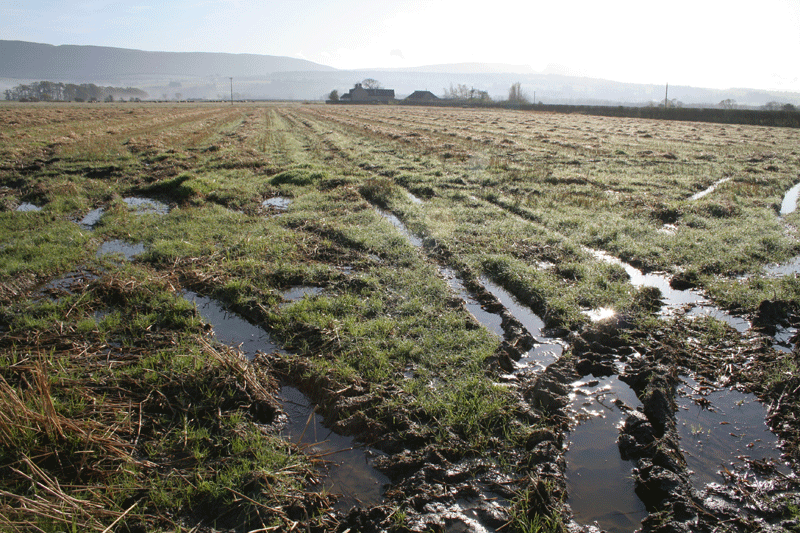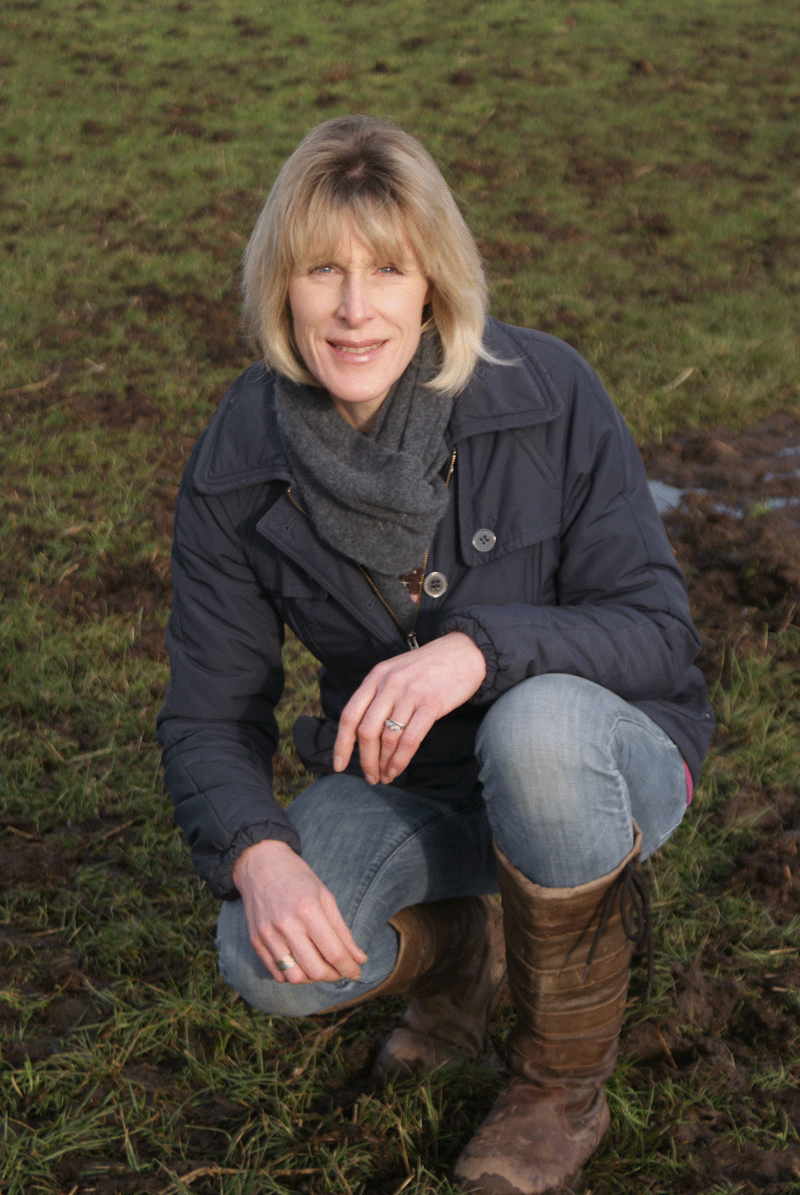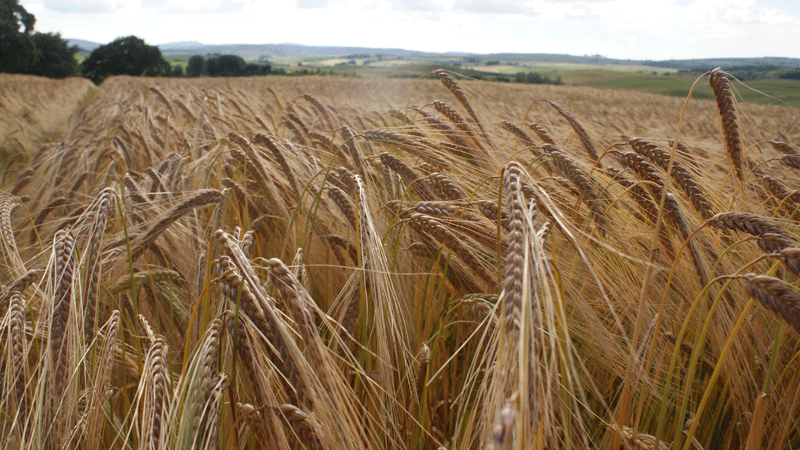Managing disease in a wet climate
How farmers in Scotland succeed
IN ONTARIO, SOME people blame climate change for what seems to be the ceaseless rain and cool temperatures plaguing farmers here the past few growing seasons. It’s rare for a normally sunny and hot province to be so damp and cold.

photos courtesy Fiona Burnett/SRUC
But in parts of Scotland, home to some of the world’s best grain and distilled grain products, such weather is classic and traditional. For example, in the Lanark area in southwest Scotland, a popular grain growing area, farmers must manage up to 2,000 millimetres(mm) (almost 80 inches) of precipitation a year. Compare that to Owen Sound, one of Ontario’s rainiest and snowiest places, with a relatively tame 1,144 mm annually (about 40 inches), and you can see what some Scottish farmers are up against.
So how do they succeed? It’s a pertinent question, as farmers look globally for answers to new climate-related questions.
 Dr. Fiona Burnett, head of crop and soil systems for Scotland’s Rural College, says Scottish farmers are used to managing wet and cold. They, too, have seen more climate-related crop problems over the past few years. But for them, excessive moisture is part of a normal swing in the weather. As a catalyst for disease, it’s intensified, but still it’s practically routine.
Dr. Fiona Burnett, head of crop and soil systems for Scotland’s Rural College, says Scottish farmers are used to managing wet and cold. They, too, have seen more climate-related crop problems over the past few years. But for them, excessive moisture is part of a normal swing in the weather. As a catalyst for disease, it’s intensified, but still it’s practically routine.
“Our biggest disease issues tend to be those that enjoy wet conditions,” she says. Among them are septoria in wheat, rhynchosporium (leaf scald) in barley and rotational diseases such as eyespot, and take-all (caused by the fungus Gaeumannomyces graminis var. tritici).
Burnett says heavy disease pressure means fungicide use is intensive in order to maintain good yields. Last year was a particularly heavy disease year in Scotland, and accordingly, fungicide use increased. She says producers are seeking out disease-resistant varieties – but they’re simply not widely available. Even in a country accustomed to coolness and dampness, the weather change has been significant and sudden enough that the agri-food sector is playing catch up. Often, good resistant varieties are not yet available for key diseases such as septoria.
“Varieties are still mainly selected for yield potential and marketability,” says Burnett. “Any benefits in terms of disease resistance are very secondary.”
What makes climate change even more problematic is that it’s not always just about cooler temperatures and damp conditions.
“Climate has an effect not just in increased rain events over key growth periods,” says Burnett, “but also because warmer autumns and winters mean crops are more advanced and carry more disease going into the winter than they used to.”
This brings a whole additional management challenge to the sector. Burnett advises Ontario farmers dealing with conditions like those in Scotland to integrate their management strategies. That means using more resistant varieties where possible, adhering to what she calls “sensible” rotations, using mixtures of fungicides rather than overexposing single actives (to avoid resistance), and getting spray timings right, to make the best of your inputs.

Andrew Gilchrist, managing director of Scottish Agronomy Ltd., an advisory organization specializing in technical information for producers, says diseases, such as septoria and rhynchosporium, as well as yellow rust in wheat, have all increased in the last few years. He attributes some disease increase to disease resistance, and some to a wetter and cooler climate. In any event, it’s required changes in management.
“We are having to increase the intensity of our crop protection programs, fungicides in particular,” he says. “Increasingly higher doses are required to maintain adequate levels of disease control.”
Gilchrist says Ontario farmers who are facing conditions that are cooler and wetter than they have experienced in the past are likely to encounter the same issues as farmers in Scotland. In such cases, he offers three suggestions:
Prophylactic disease control measures. He says these are more likely to be successful than erradicants.
Pay attention to detail. “Our best farmers take every opportunity to sow, fertilize and spray crops when weather windows allow,” he says. “You snooze – you lose!”
Grow more disease-resistant varieties. Gilchrist says Scottish farmers are learning that it is likely more cost effective to grow varieties that are slightly lower-yielding varieties but more disease resistant.
Gilchrist says he believes in natural cyclical weather variations, and recommends farmers manage accordingly. •

















